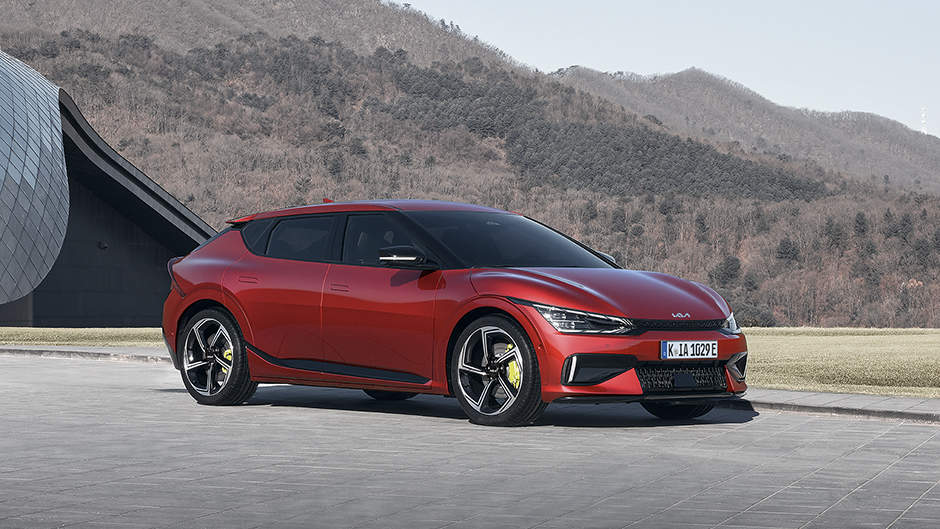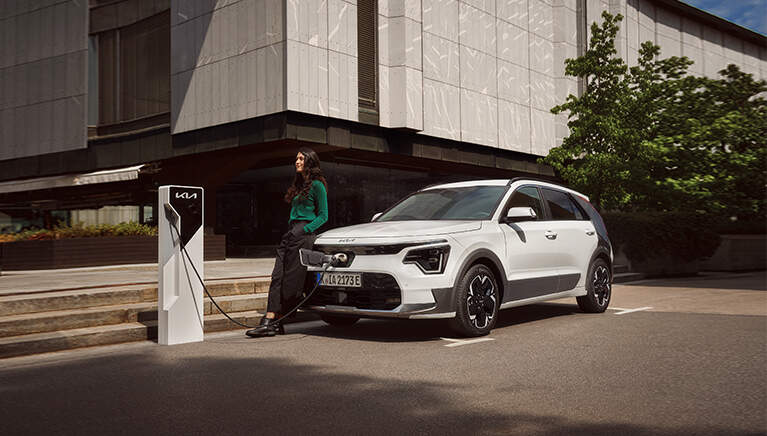EV Myth Busting

Your EV questions answered
There are plenty of benefits to running an electric Kia car – especially if you’re a company car driver or a fleet manager. But if you’re new to electric cars, you may have a few questions. To help, we’ve answered some of the most common electric car queries.

Attractive whole-life costs
An electric car will likely have a higher P11D price, but in most cases they have a lower total cost of ownership. Whole-life costs tend to be lower because electric cars can cost significantly less to run. Firstly, charging during off-peak hours is significantly cheaper per mile than fuelling with petrol or diesel. EVs also have fewer moving parts, so generally have lower service and maintenance costs. There are significant Benefit in Kind tax savings to be made too. BIK tax is currently just 2% for a fully electric car – a car that emits 100g/km of CO2 is 25%. That stark difference can equate to thousands of pounds saved over a three-year cycle. There are capital allowance benefits too, because electric cars are eligible for 100% first-year allowances.
Plenty of range to get you to your destination
An electric Kia will have more than enough range to complete most journeys with ease. 99% of car journeys in England are under 100 miles. An EV6 can travel three times that distance, with a range of up to 328 miles*.
*The range was determined according to the standardised EU measurement procedure (WLTP). The individual driving style and other factors, such as speed, outside temperature, topography and the use of electricity-consuming devices/units, have an influence on the real-life range and can possibly reduce it.
Charge in as little as 18 minutes
Charging times vary depending on the vehicle and the speed of the charger. A Kia EV6 can charge from 10% to 80% in as little as 18 minutes with a 350kW charger. That’s enough time to take a break and grab a coffee.
Paying for charging couldn’t be easier
Our charging solution – Kia Charge – gives you access to 27 different UK charging networks, and many more across Europe, through a single easy-to-use app and card. You can also enjoy discounted charging rates on certain networks too. The app keeps track of your charges, so it’s ideal for invoicing business mileage.
Plenty of places to plug in
The UK has an extensive and growing rapid charging network. There are currently more than 30,200 charging points
in the UK – and that number is rising every day.

Eye-opening performance
Firstly, electric cars are significantly more responsive than a petrol or diesel equivalent. That’s because electric cars deliver instant torque, which means there’s no need to wait for the revs to rise, or for an automatic gearbox to decide on the correct gear. Simply touch the accelerator and you get instant, effortless acceleration – perfect for pulling out at busy junctions or roundabouts. Our fastest electric vehicle , the EV6 GT will sprint from 0-62mph in a blisteringly quick 3.5 seconds – fast enough to surprise many supercars.
Batteries backed by our warranty
Modern electric car batteries have very good longevity. At Kia, our batteries are covered by our 7-year, 100,000-mile warranty, and you can expect them to last much longer than that.
Need to tow? No problem
The EV6 has a towing capacity of 1,600kg. That increases to 1,800kg for the EV6 GT.
Some of the safest cars on the road
Not only are electric cars safe, but the highest scoring cars in the Euro NCAP safety tests are almost all electric. The EV6 for example has a five-star rating, which includes a 90% score for adult occupant safety – one of the highest available.
_940x529.jpg)
Want to find out more about Kia’s fleet services? why not speak to our dedicated Kia Business centre?
ENQUIRE NOWImages shown are for illustration purposes only and may not be to full UK specification. Features shown are not standard across the Kia model range and availability will vary dependant on model. For further details please refer to the individual model specification sheets.
The range was determined according to the standardized EU measurement procedure (WLTP). The individual driving style and other factors, such as speed, outside temperature, topography and the use of electricity-consuming devices/units, have an influence on the real-life range and can possibly reduce it.

